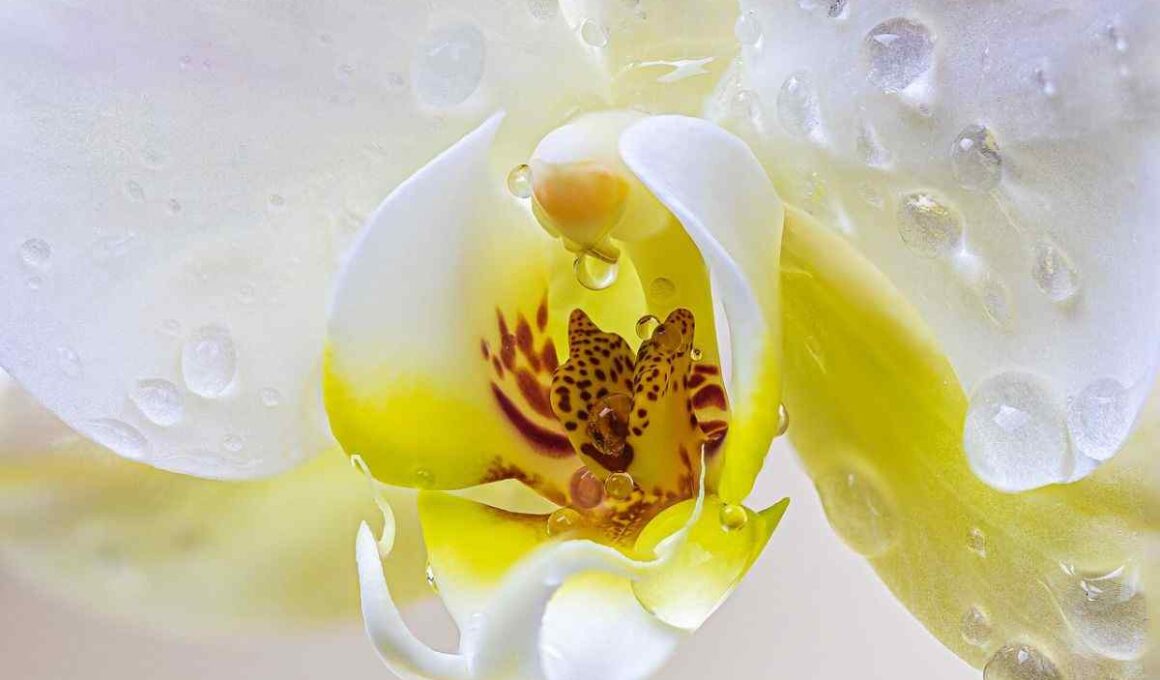Which Types of Orchids Grow New Flower Spikes Easily?
Before we tell you how to make an orchid grow a new spike, it’s important to note that it’s not always possible to do without a greenhouse. Some varieties are known for reblooming more easily than others. The most common types of orchids that rebloom regularly include:
- cattleya;
- cumbria;
- dendrobium;
- phalaenopsis;
- vanda.
These varieties are more likely to rebloom in the right conditions. Phalaenopsis is the easiest to work with. Others will require more specific temperature ranges, humidity levels, and other conditions that aren’t always possible to provide at home.
When Should You Try to Get an Orchid to Grow a New Spike?
The best time to try and get your orchid to grow a new spike is after it has bloomed, and the flowers have fallen off. This is typically in the late spring or early summer. The plant will rest and work up the energy to bloom again. You can encourage it to do so by following the tips below!
How to Make an Orchid Grow a New Spike – First Steps
So, how to make an orchid grow a new spike at home? The exact conditions you’ll need to provide will depend on the type of orchid you have. The first step is to start using orchid fertilizer once a month. Keep the plant in bright, indirect light. Then, there are three approaches you can try:
- Give it a rest. Some orchids can produce new (although smaller) blooms on an old flower spike. This often doesn’t work, but if you want, you can leave the spike in place and wait.
- If you’re working with a phalaenopsis, you could try cutting the flower spike at a slight angle between the second and third node, counting up from the bottom. It might bloom from the remaining node.
- For the highest chances of success, give the orchid a fresh start by removing the flower spike entirely. Use sterile clippers or scissors to clip it about ½ inch from the base of the plant.
Now, let’s walk through the remaining steps for different types of orchids. Scroll down to find yours and follow the instructions for the best results.
Phalaenopsis
After cutting the flower spike, you can expect your phalaenopsis orchid to bloom again in several weeks. In the meantime, water it once a week and keep it on an east or southeast windowsill. Make sure the day temperature is lower than 79 degrees Fahrenheit. If you want to try and speed up the process, you can:
- stop watering the plant for 2 weeks;
- then place it in a dark closet for a week;
- water and fertilize abundantly after the week passes and move the plant to moderate sun.
If it’s successful, you should see a new spike growing after 2-3 weeks. That’s because stressed plants will often redirect their energy to blooming.
Cattleya, Cymbidium, Dendrobium and Oncidium
These types of orchids are a bit harder to work with and don’t respond well to the method above. They’re sympodial orchids, which means they grow from pseudobulbs. They need a different approach:
- locate the rhizome;
- make a clean cut ½ through the rhizome (not all the way through) with sterile equipment between two older pseudobulbs (the number of cuts shouldn’t exceed 2-3 at a time);
- seal the cuts thoroughly with fungicide or cinnamon.
The orchid should start growing new pseudobulbs within a few weeks. You should see the buds – the beginnings of a new flower spike – after about two months. During that time, you need to provide the plant with everything it needs – the right amounts of water, fertilized and sunlight.
Vanda
This type of orchid is epiphytic, which means it grows on other plants or trees in the wild. They’re used to getting plenty of sunlight and often need more than what you can provide indoors. Here’s how you can encourage a vanda to rebloom:
- increase the amount of sunlight it gets gradually;
- let the potting mix almost dry out between waterings;
- fertilize every other week with a high-nitrogen fertilizer;
- stop fertilizing about a month before you expect the plant to bloom.
A vanda orchid typically blooms every year, so if you follow these steps, you should see a new flower spike soon!
How Long Does It Take for a New Orchid Spike to Grow?
Now that you know how to make an orchid grow a new spike, you’re probably wondering how long it will take. The answer depends on the type of orchid and the method you used.
If you followed the steps for phalaenopsis, cattleya, cymbidium, dendrobium or oncidium above, you can expect to see a new flower spike in about two months. For vanda, it might take a bit longer – up to six months.
Why Won’t Your Orchid Grow a New Spike?
There are a few reasons why you can’t make your orchid flower. The most common one is that it’s not getting enough light. Orchids need bright, indirect sunlight to bloom. If you think that might be the problem, try moving your plant to a brighter spot.
Another reason could be that the plant is too wet or too dry. Orchids need to be in a pot with well-draining potting mix so that their roots don’t rot. If you’re still having trouble, it might be time to consult a professional. They can help you figure out what’s wrong and how to fix it.
Patience Is Key to Making Orchids Rebloom
And there you have it – all you need to know about how to make an orchid grow a new spike. Just remember that patience is key. Orchids take time to bloom, so don’t get discouraged if you don’t see results right away.
Do you have any more tips for how to make an orchid grow a new spike? Share them in the comments below.



















